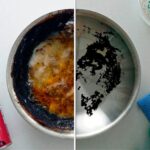Weaning is a crucial developmental stage for kittens, and understanding the appropriate timing is essential for their health and well-being. So, What Age Should Kittens Start Eating Food? Let’s delve into the details of kitten weaning and nutritional needs.
The process of introducing solid food, also known as weaning, should ideally commence around three to four weeks of age. Initiating weaning earlier than this timeframe or abruptly can induce stress in both the mother cat and the kittens. This period can be particularly stressful for kittens as they begin to spend more time independently from their mother and littermates. A gradual and consistent weaning process is crucial for promoting healthier kitten development.
From approximately three to four weeks old, begin introducing wet or dry kitten food to your kittens. If opting for dry food, it’s advisable to initially soften the kibble with water or kitten milk to facilitate easier consumption. Offer food at least four times daily, or ideally, ad libitum, meaning food is consistently available. Kittens that are fed ad lib typically eat every few hours.
To facilitate easy access, serve food on a very shallow saucer or plate. It’s important to be prepared for the kittens to potentially stand in and walk through the food, necessitating frequent changes to maintain hygiene. When feeding, provide small portions at a time. If kittens require encouragement, consider placing a small amount of food on your finger or the tip of a small spoon. Over several weeks, observe as the kittens gradually increase their intake of kitten food and reduce their reliance on their mother’s milk.
Kittens should experience steady weight gain and be completely weaned by approximately six to eight weeks of age. After this point, adhere to the food manufacturer’s recommendations as a guideline for feeding (typically found on the food packaging). It’s crucial to consistently feed kittens a diet specifically formulated for their age group, as adult food may lack the necessary nutrients to support their growth and development. Providing age-appropriate nutrition ensures the kittens receive the essential building blocks for healthy development.
While milk replacement or commercial cat milk can be offered as part of the weaning process, it is not essential. Kittens will receive all the necessary nutrition from their mother’s milk and the kitten food that is provided. However, if the mother cat is unable to provide sufficient milk, supplementing with a kitten milk replacer can be beneficial.
Litter Tray Training for Kittens
In addition to proper nutrition, litter box training is another important aspect of kitten care. Introduce kittens to a low-sided litter tray from about three weeks of age. Begin with sand, wood, or paper-based litter, rather than clay, as some kittens may attempt to ingest the litter. Silica gel should not be used for kittens younger than eight weeks.
Many kittens learn to use their litter tray by observing their mother. If they do not, gently place your kitten in the tray, ideally after they wake up or after meal times. Use one of their front paws to gently scratch at the litter. Cleaning their ano-genital area (openings under the tail) with a damp cloth can also help. Leaving a small amount of soiled litter in the tray can serve as a helpful scent reminder. This familiar scent encourages them to return to the tray for future use.
